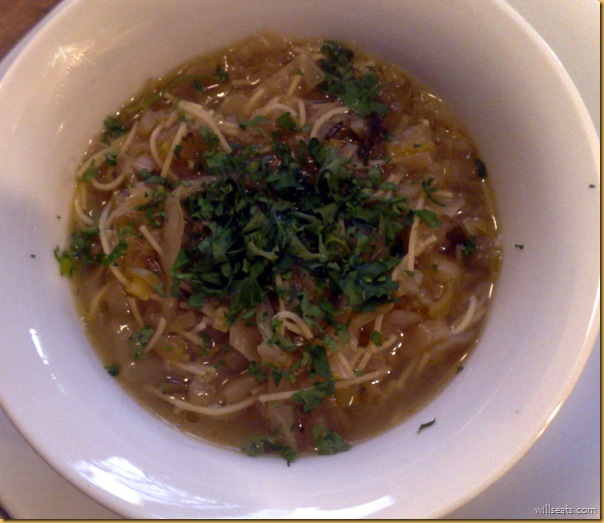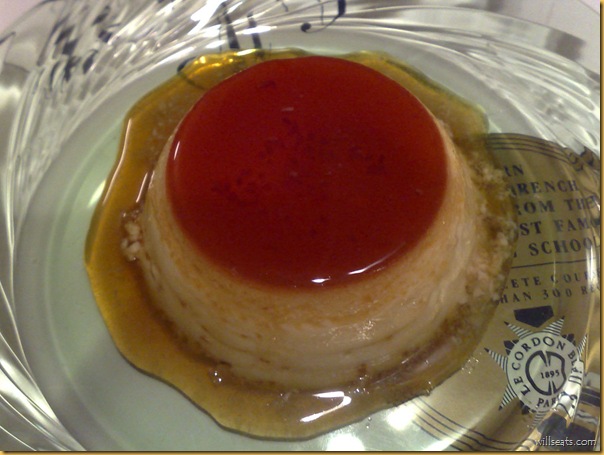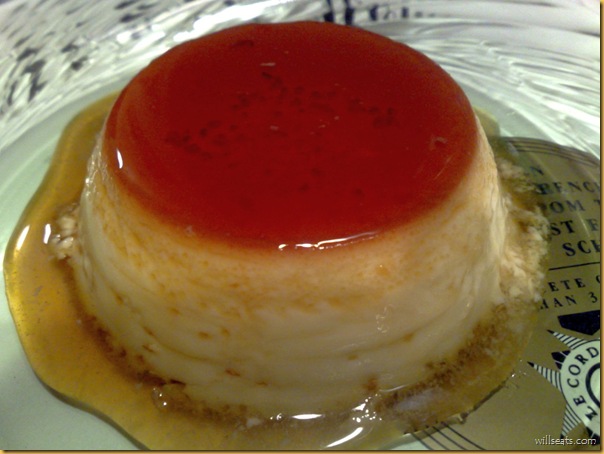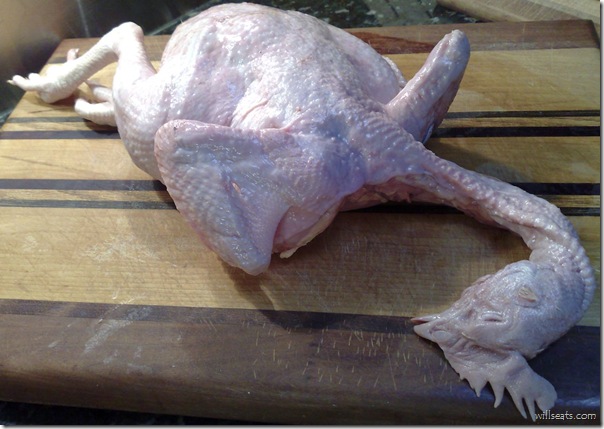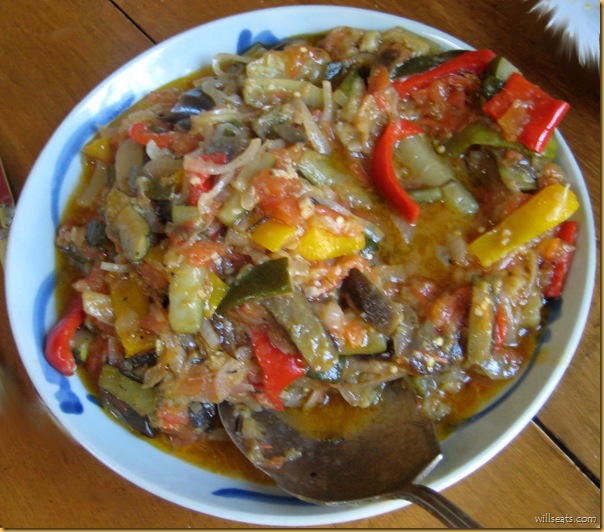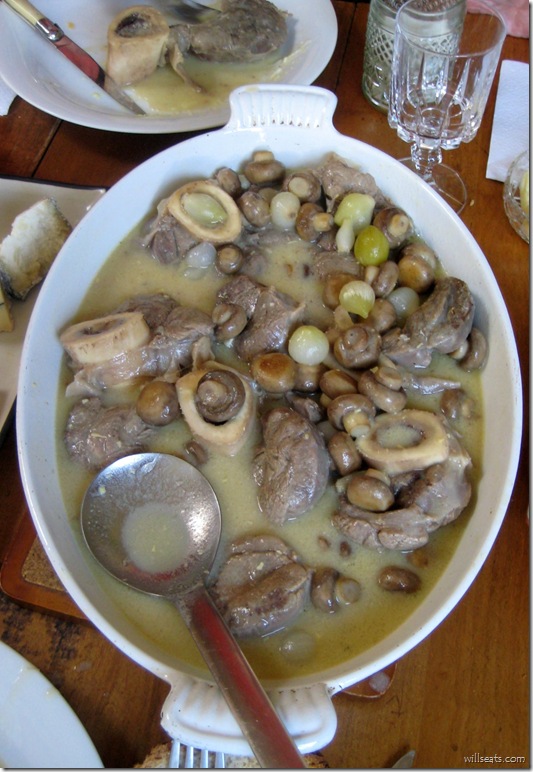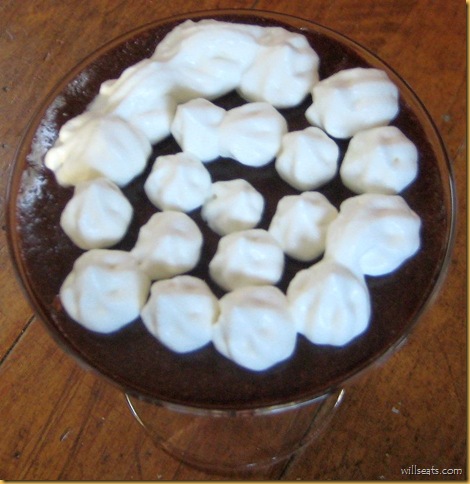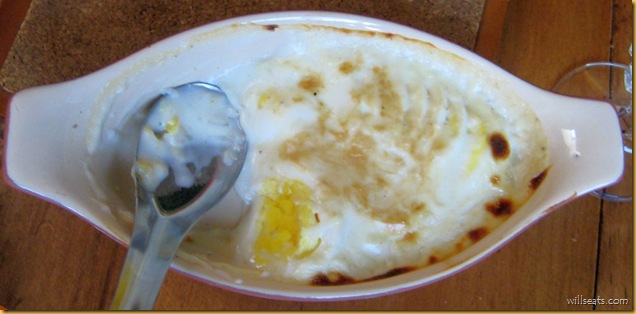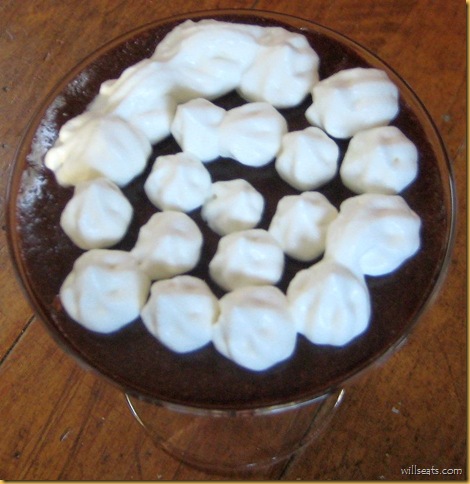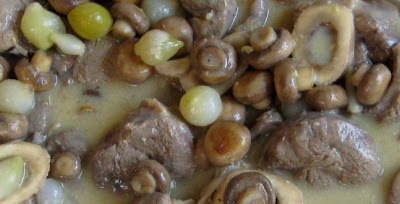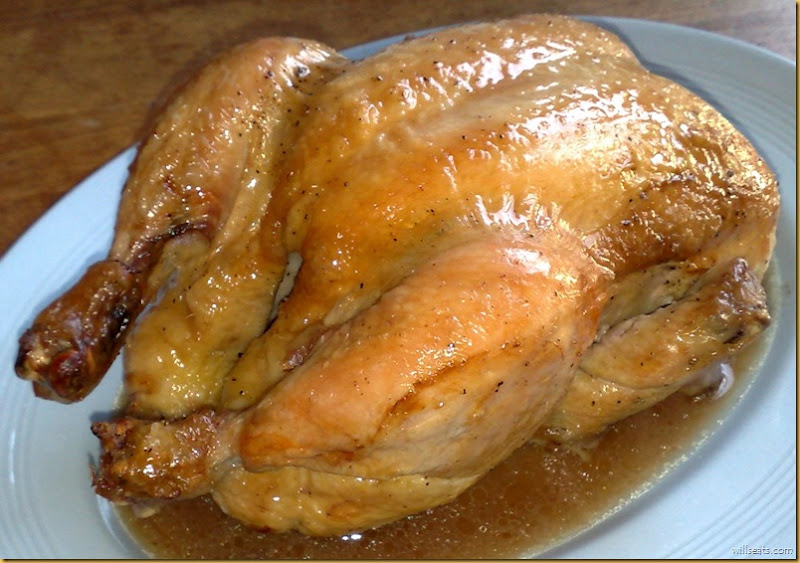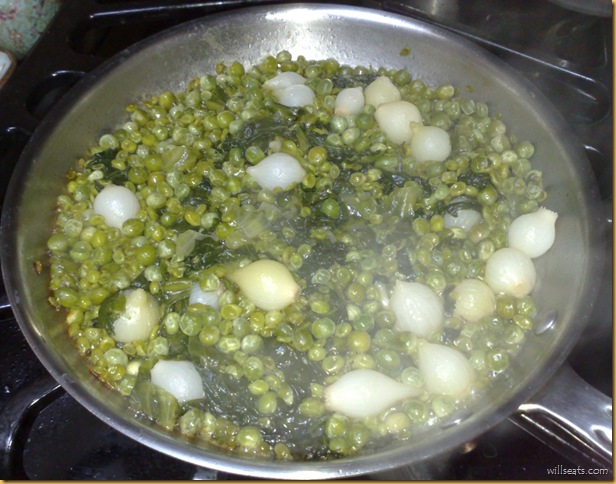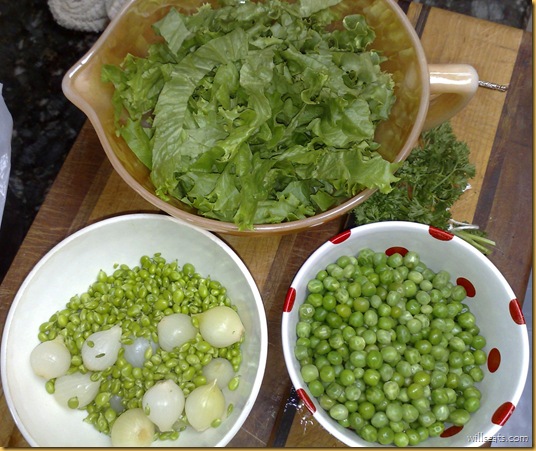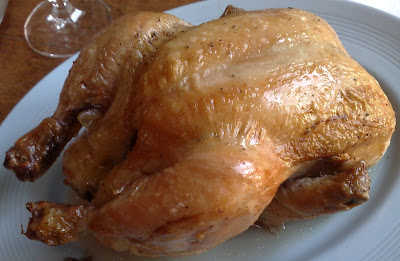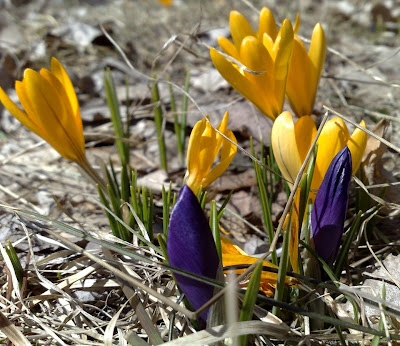Then there's the "main" course - the veal - with roasted apples and a mushroom sauce.
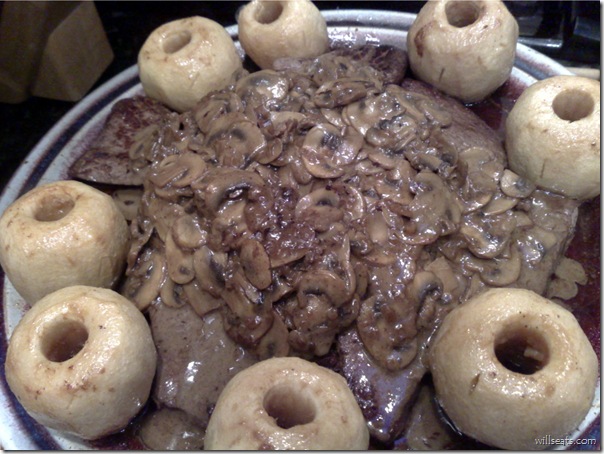
The veal is hiding under the mushroom/cream sauce; trust me, it's under there somewhere.
A big hit; the apples went over real well for something so deadly simple (must be the butter). The crème fraiche and the mushrooms "made" this meal.
And here we go - rough notes on... what I really did - and look down to the "Notes" section (after the Procedure section) if things appear to be confusing - they sort of were at moments.
Veal Scallops with Apples and Calvados : Escalopes de Veau Vallée d'Auge
Serves: 7
Ingredients
- butter
- 1/2 kg [1 #] button mushrooms, sliced thin
- crème fraiche (there's a whole convoluted story about that later on)
- 7 veal cutlets (although it calls for "veal scallops" and I obviously did not want "veal scallopini" because they're way way too thin). It was 1 kg [2 1/4 #]
- butter, more (surprised !? - no, not really)
- olive oil
- shallots, bruinoise
- calvados
- créme fraiche, more
Procedure
- Make crème fraiche (yes, make it - since none is available, apparently, in all of Greater Toronto or the surrounding region [hmm, that might be a slight exaggeration]) - see the Notes, it takes a day
- In butter, cook the sliced mushrooms until dry-ish; add some (1/4 C) crème fraiche - salt and pepper - set aside (did this way ahead)
- Coat the cored, peeled, apples with melted butter (no sugar) and bake at 225 C [450 F] for 15 or 20 minutes - tender but not smooshy
- Smash the veal cutlets to flatten them out some (evenly), season (salt & pepper) - not thin, but even
- Sauté the veal (very hot) in butter and oil (about 50/50). Enough, all at once, in the pan that the pieces are not touching. Do in batches, cover "done" ones with foil. Drain excess fat off between batches (except the last batch). Don't cook past "medium" - they'll be tough. Err on the low side of doneness.
- Remove the last batch of meat (& cover the meat). Toss the diced shallots in the sauté pan; cook 'til tender & not colored (lower the heat probably).
- Deglaze with Calvados - in fact, flambé the calvados (first turning off the exhaust fan, please), in fact, have a sip of calvados (it's by the way, a sort of apple brandy)
- Add the previously prepared mushrooms,
the rest of the crème fraiche,
boil for a minute or two,
add back in the juices from the "waiting" veal,
continue boiling for a minute (or, in my case, four) to reduce to a nice saucey consistency
- Serve, sauce over the veal, with the apples artfully surrounding the veal on the serving platter.
Done
Notes
- Crème Fraiche, is French and translates as "Fresh Cream" but it's not. It's fermented cream. It's sort of thick like sour cream but it's not sour. It's not widely available. It doesn't separate/curdle if boiled (normal cream or milk usually does). It's easy to make/fake.
For 1 Cup (as used in this recipe) - 1 C cream, whipping, 35%
- 2 T buttermilk
- 24 hours, covered, at room temperature (to thicken)
- Allocate 1 apple per person, plus 2 apples for good luck. The apples should be grouped in a pan that just barely fits the whole lot of them. Cook until just about done then "hold" in the turned off oven until the veal's ready. They're done only with butter. Golden Delicious apples worked for me.
- The veal "scallops"...don't exist (well, not here they don't). So I got cutlets; good thick ones too. They were sized at 3 to the pound; I got 7 of them. Once at the house they suddenly looked really large, about 6 ounces each [180 grams], so I cut each one in half. That make 14 (fourteen) pieces of meat! Way out of line with what people would eat. Ended up cooking 12 pieces in total; really could have got away with just 10 for 7 people.
I finally figured out that I ought not be writing the whole recipe straight out of the book (the book being Le Cordon Bleu: At Home) - it's their recipes I'm following as exactly as I can and I'm not injecting much original content. I might get stomped by some intellectual property lawyer types some day if I just write out their recipes - so, I'm going to go to the style of reporting "what I actually did" but leave out the part where I copy from their book. It is, after all, only fair. So, rush out and buy their book so you can follow along.
There will be lots, still, about the ingredients, tips, tricks and what went right, wrong, or otherwise during the experiments (meals); and what the victims (guests) liked - or not. We'll see if this style of presentation flies.
Final note: The blog, for the first time, has exceeded 1000 unique visitors this month (April); rarified atmosphere. Thanks and welcome to you all.
Technorati Tags:
recipe,
vealdel.icio.us Tags:
recipe,
veal


